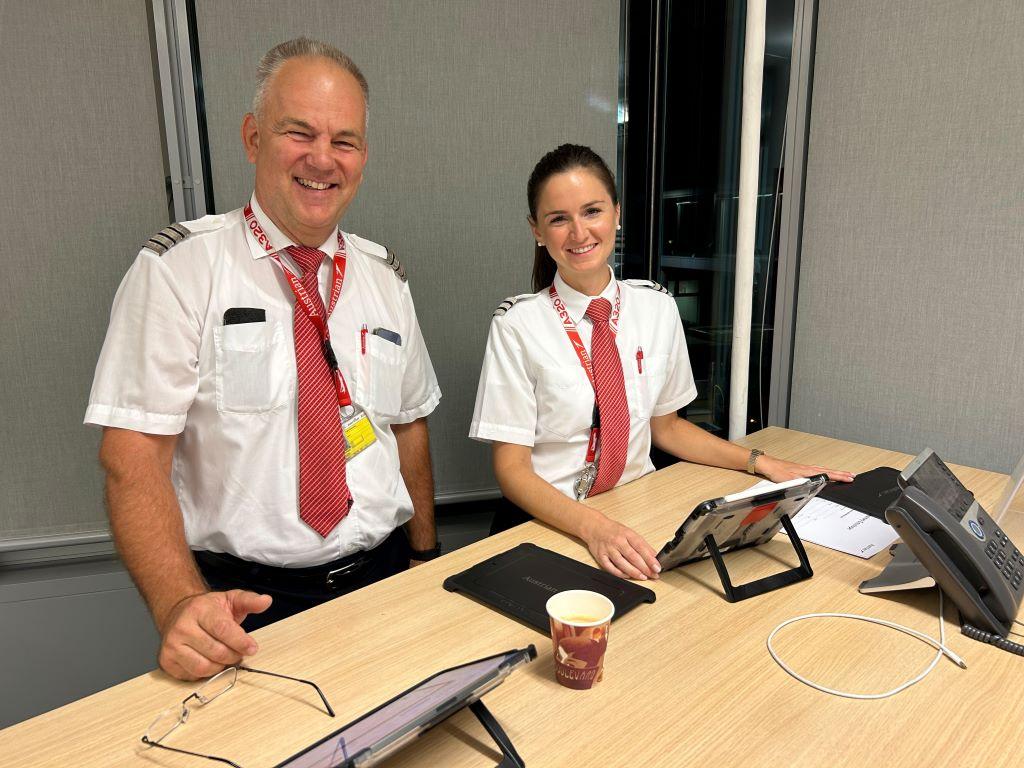
Vienna Airport, 5:30 a.m. local time. Austrian Airlines Captain and Airbus A320 Fleet Chief Andreas Radl and First Officer Magdalena Gruhn prepare for the day’s flight program. Using Electronic Flight Bags for their work, both pilots discuss the flight process in the briefing room at the airline’s head office at Vienna Airport. Gruhn will be the pilot flying on leg 1 (Vienna-Sofia) and leg 4 (Zadar-Vienna), while Radl will operate leg 2 (Sofia-Vienna) and leg 3 (Vienna-Zadar).

Later, at 6 a.m., the cockpit crew meet with the four cabin crew members for the day’s four flights from Vienna to Sofia, Bulgaria, returning to Vienna. This is followed by a flight to Zadar in Croatia, and the final leg to Vienna airport later in the day.
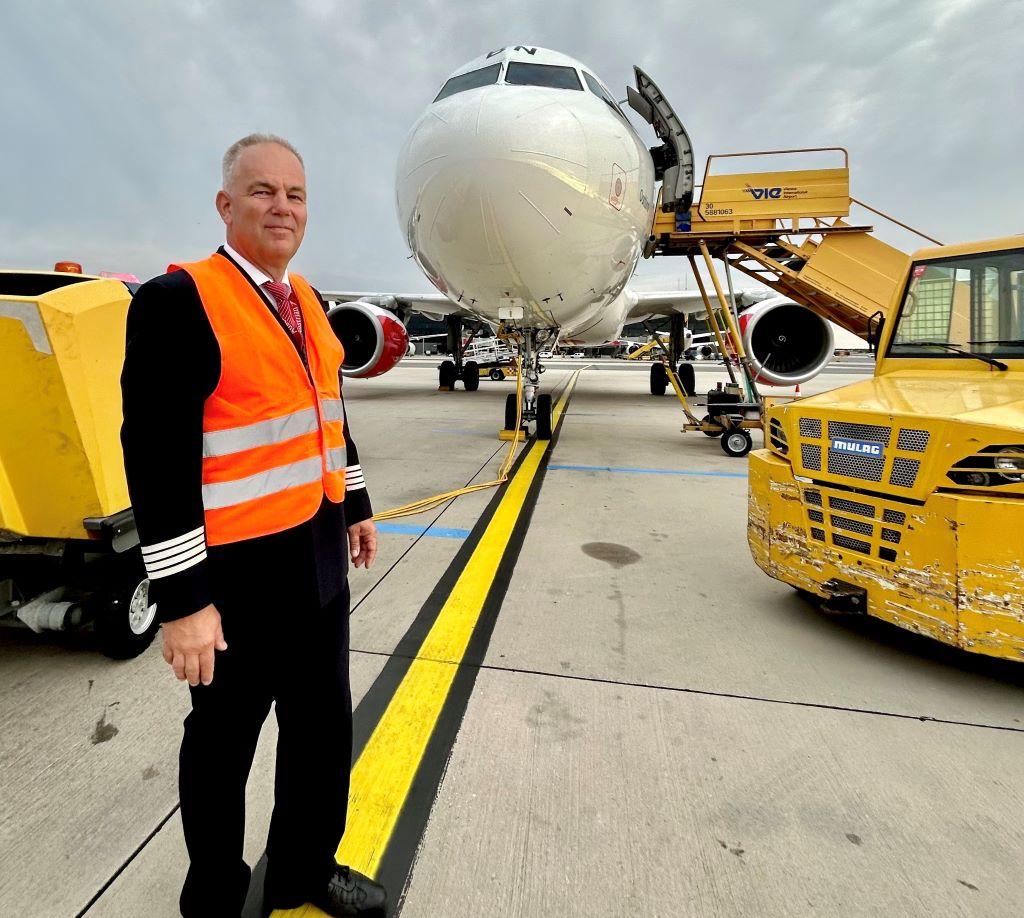
Captain Radl, who has 11,564 flight hrs. in his logbook as a commander, completes the outside check of the aircraft—inspecting sensors, tires, landing gear, etc. “The aircraft is clean and safe,” he concludes. Austrian Airlines pilots work around 90 hours per month.
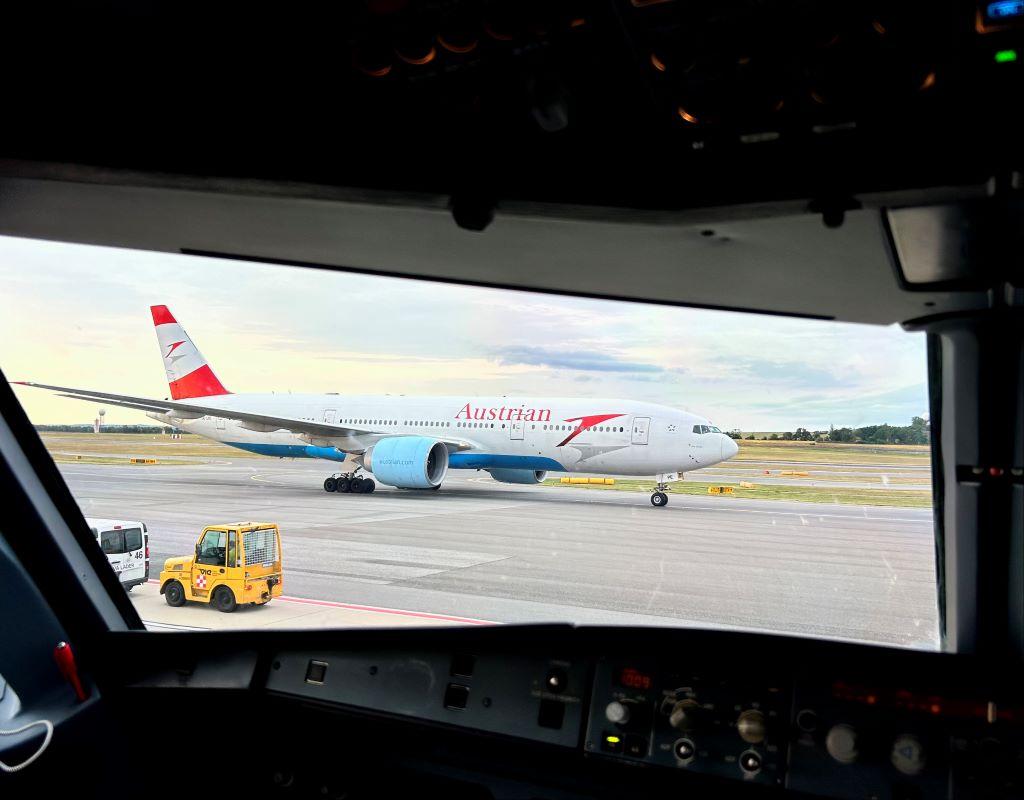
An Austrian Airlines Boeing 777-200 taxiing in to Vienna International Airport, completing a service from New York JFK. The 777 will be eventually be replaced by Boeing's 787-9.
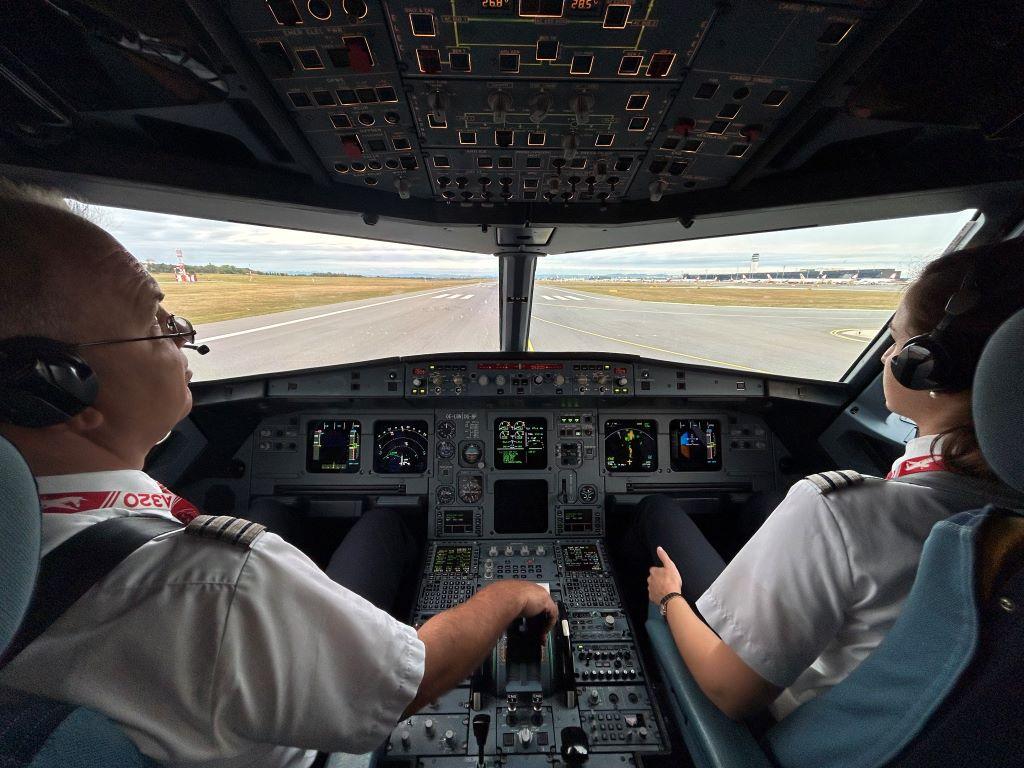
The Airbus A320, #OE-LBN, has reached runway 29 of Vienna Airport. The crew calculated 2,926 kilos (772 gal.) of fuel for the flight, #OS 793, to Sofia, refueling to a total of 5.8 tons fuel including fuel reserves. Flight time is 1 hr., 17 min. Gruhn is the pilot flying while Radl monitors the takeoff run, which is completed after 25 seconds, and the aircraft lifts off.

An Antalya-based SunExpress Boeing 737 flies over the Austrian Airlines A320 in Hungarian airspace.
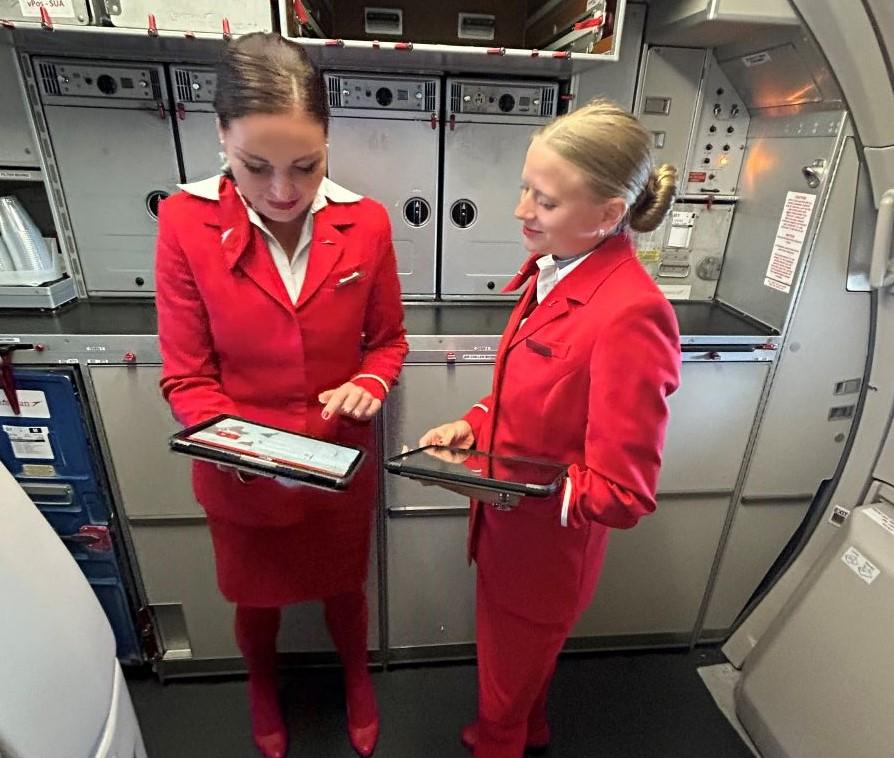
In the aft section of the A320, flight attendants Julia Paul (left) and Gloria Fila check flight documents for the upcoming sectors, which are fully booked flights.
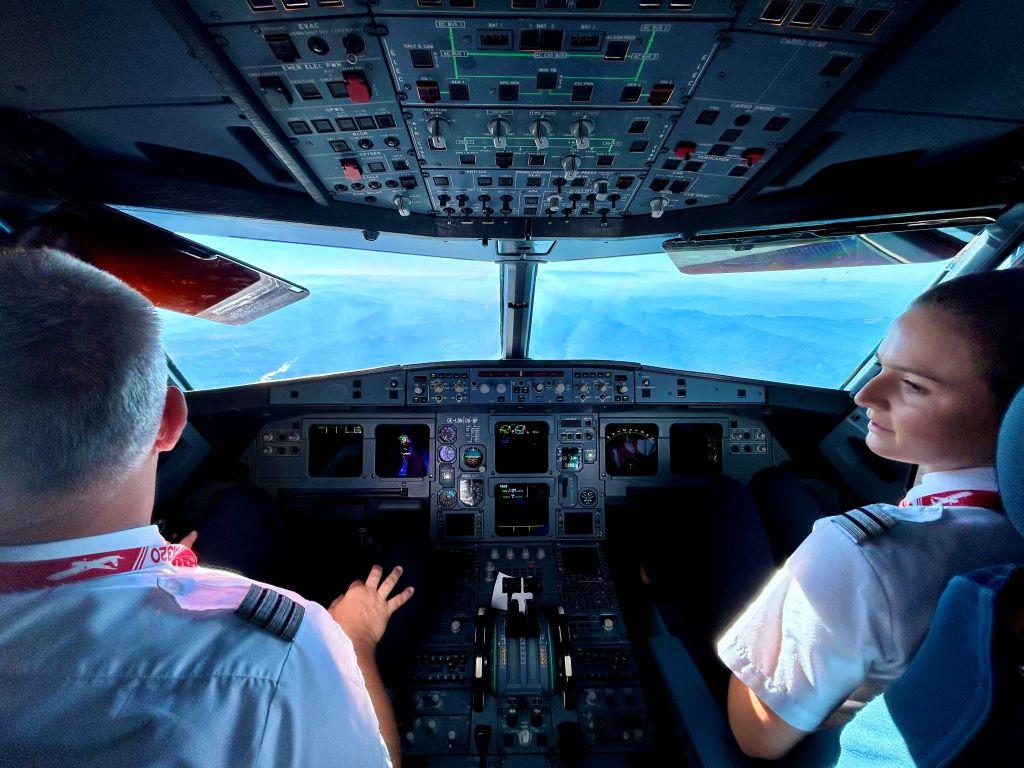
Near the city of Belgrade, the crew prepares for landing at Sofia International Airport. Top of decent will be 25 min. before landing. The alternate airport for Flight #OS 793 would be the city of Plovdiv in Bulgaria.
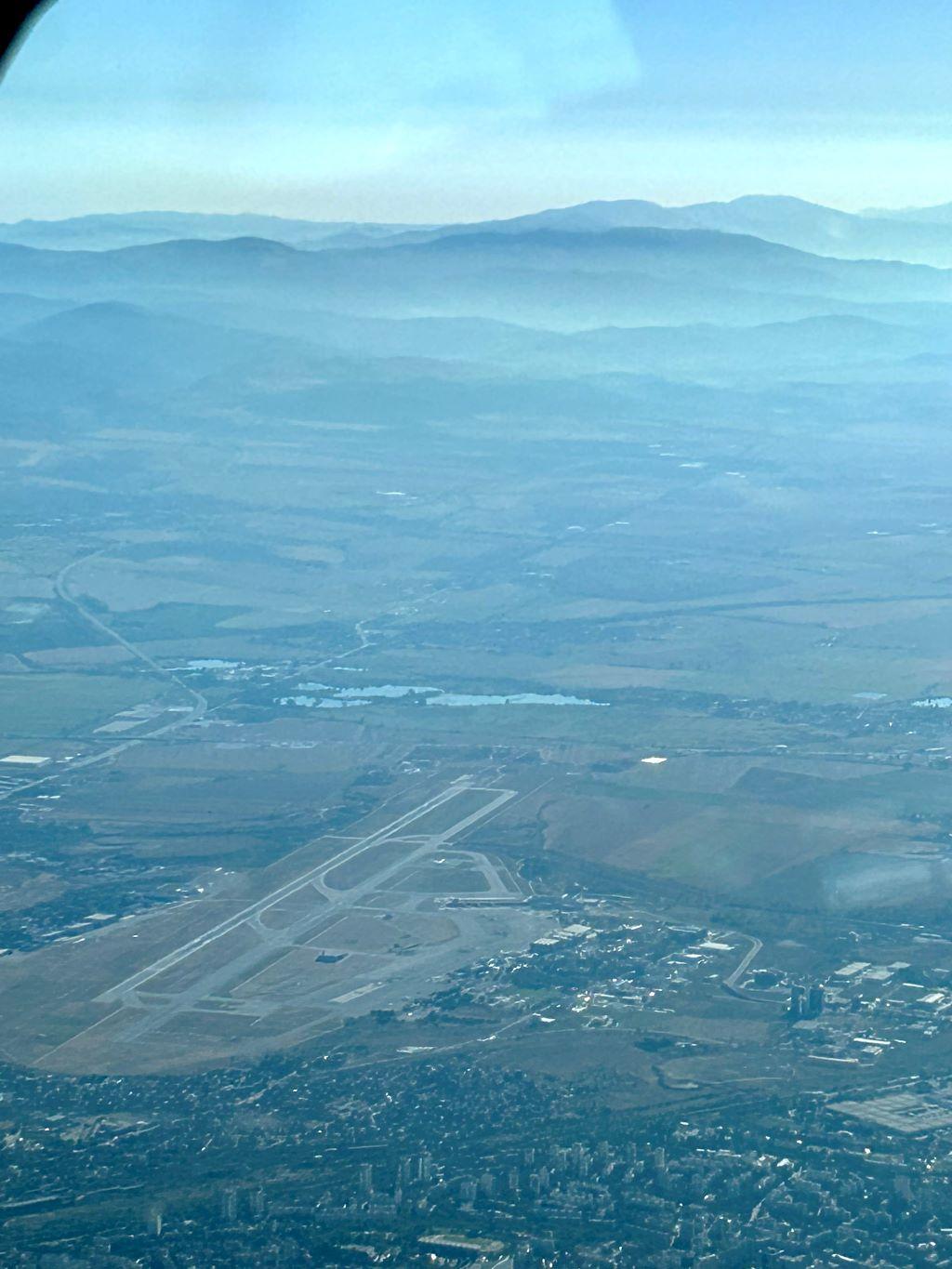
Commander Radl called attention to the high mountains that surround some parts of the approach to Sofia International Airport, observing the airport’s location on the left-hand side.
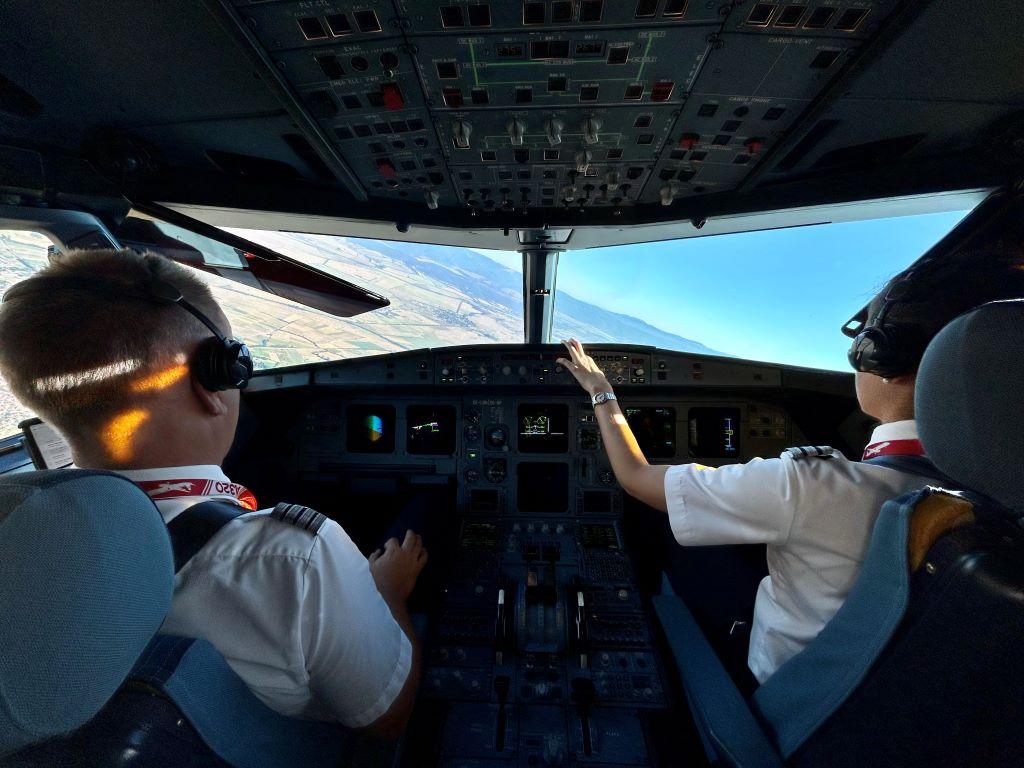
The first officer continues with landing procedures before the A320 touches down on runway 27.
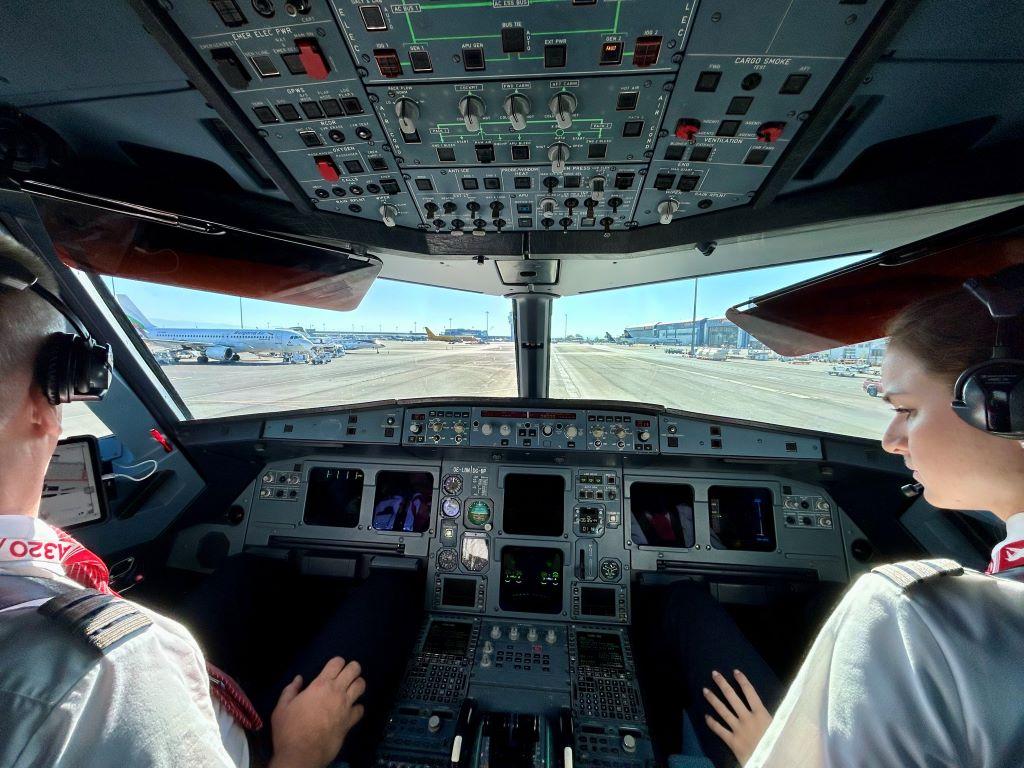
The Austrian A320, registration #OE-LBN, taxis to the terminal in sunny Sofia. On the right-hand side, the Lufthansa Technik facilities are visible. The MRO company is doing major maintenance work on Airbus A320s and Boeing 737s.
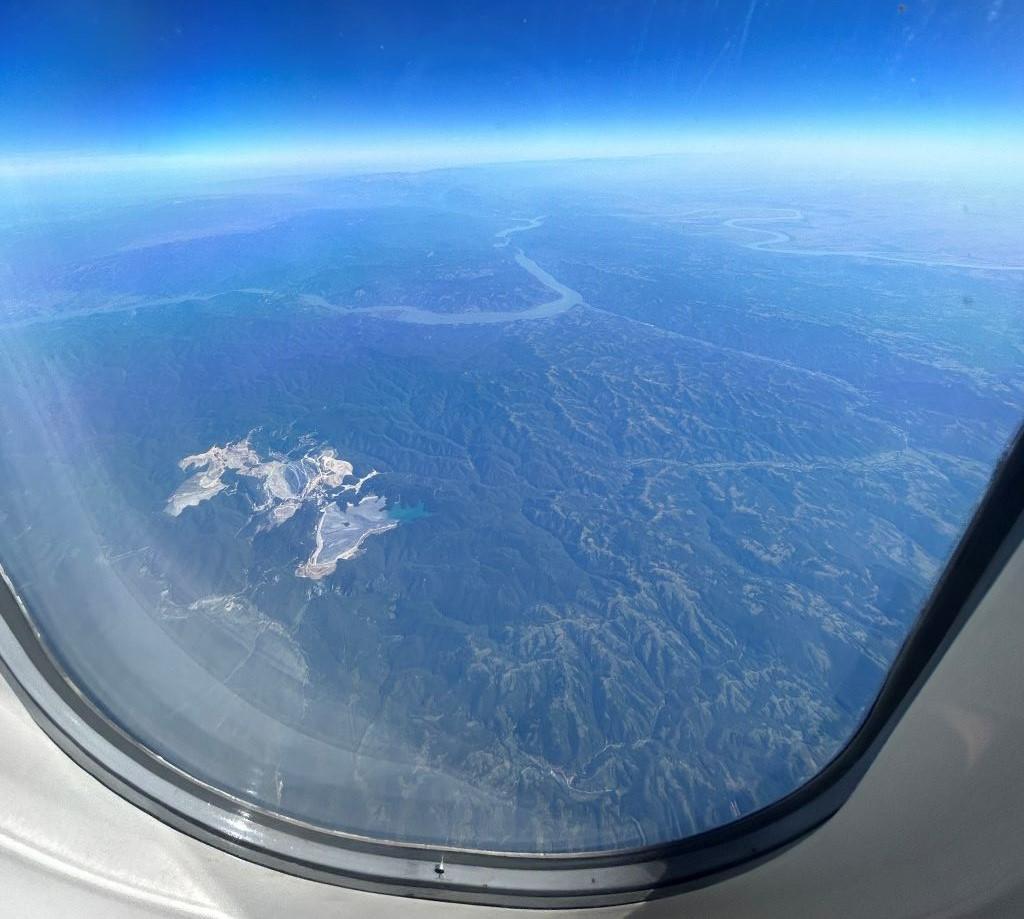
Later, after refueling the aircraft to 6,500 kilos in Sofia, the next leg (Flight #OS-794) flies to Vienna. Looking out the window, the river Danube was visible.
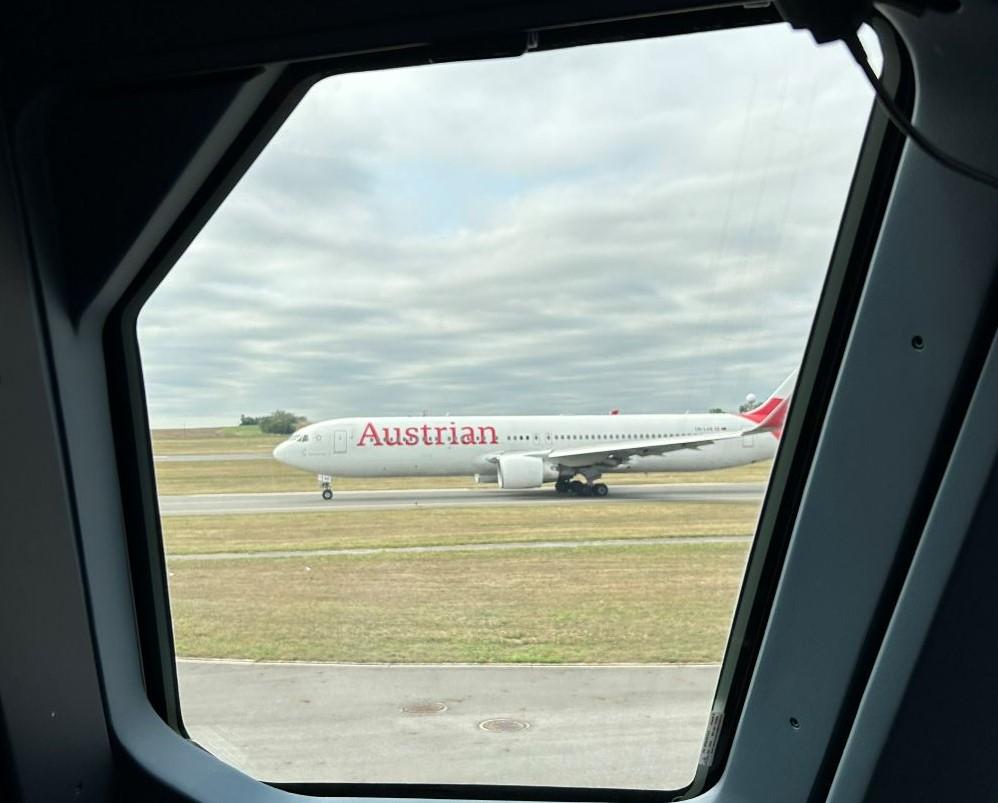
After 1 hr. and 10 min., the Austrian Airlines’ A320, registration #OE-LBN, landed ahead of schedule in Vienna, this time piloted by Radl. An Austrian Boeing 767 is seen from a window.
A short notice change of aircraft has been also announced, meaning the entire crew must leave the aircraft and prepare the flight deck of another Austrian Airlines A320, this time registration #OE-LBJ, all within in 45 mins.
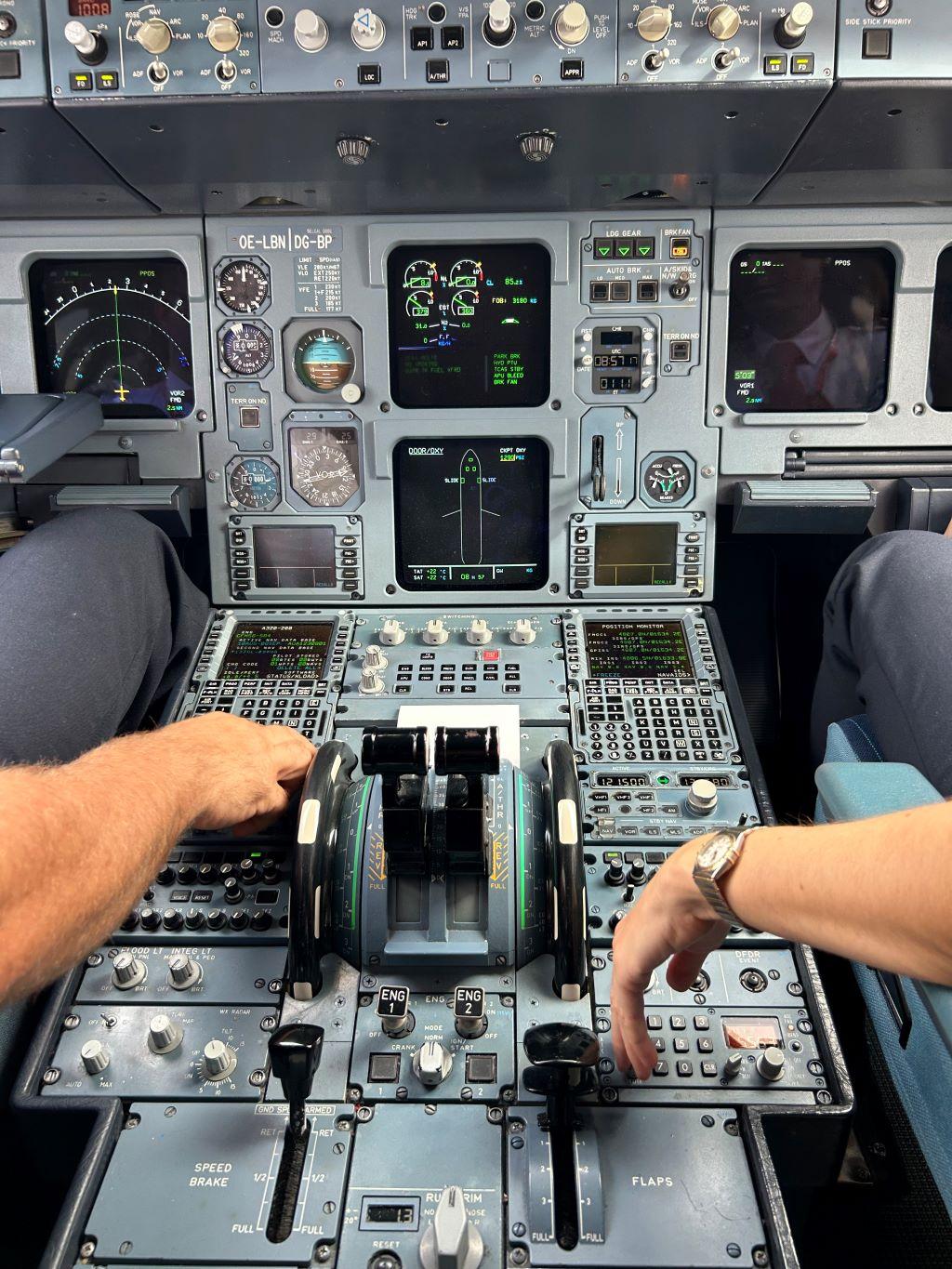
A closer look at the controls of an Airbus A320 cockpit. The Austrian Airlines’ Airbus fleet operates 1,200 flights per week; in 2022, the fleet flew a total of 101,000 flight hrs. By June 2023, 57,000 flight hrs. were logged. “We will definitely get to 110,000 flight hrs. this year,” Radl said.
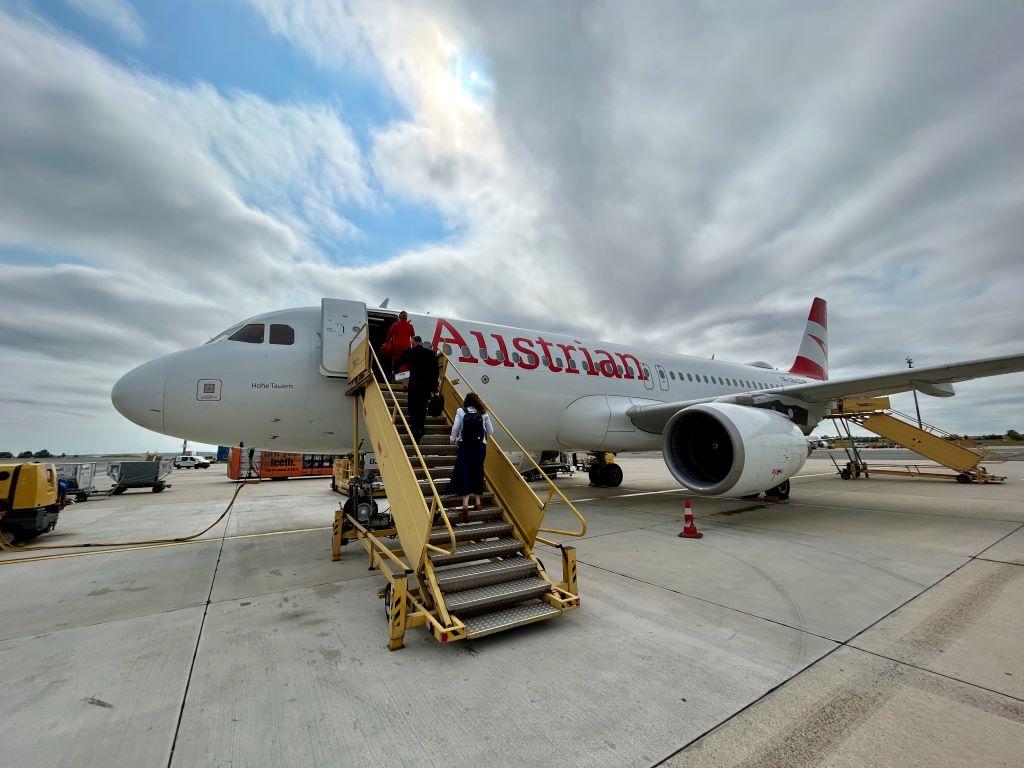
The crew enters the new aircraft, registration #OE-LBJ, with all their personal belongings to operate Flight #OS-753 to Zadar, Croatia. “Usually 72 hours before we go on a flight, the plan is to stay on the same aircraft if possible. But sometimes it has to be changed due to operational reasons," Radl said.
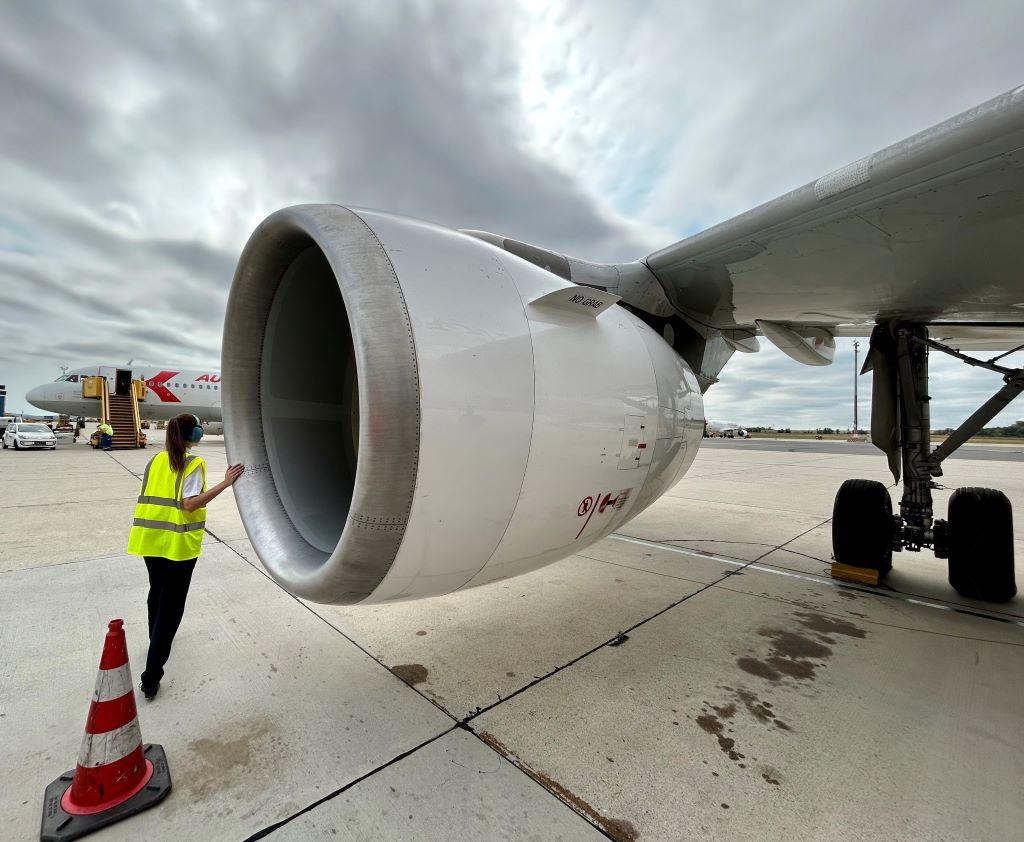
As Captain Radl prepares the cockpit of the new A320 (#OE-LBJ), first officer Gruhn does the outside check. In principle, the pilot flying the aircraft prepares the entire cockpit, including managing the flight and suggesting the required fuel, with the captain making the final decision. The assistant pilot does the walk-around.
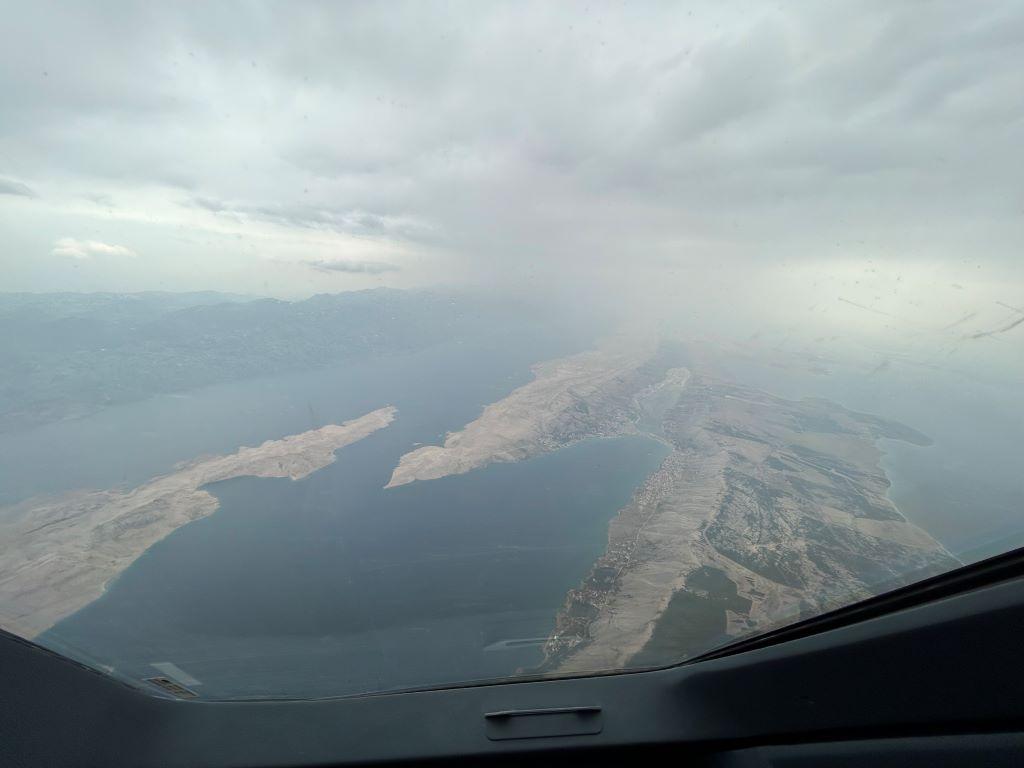
The weather has changed. Both pilots constantly monitor the weather situation. “Bora” is what the strong winds are called on the Adriatic Sea coast. Today the strong winds are reaching up to 40 knots (46 mph). The alternate airport identified for the Vienna-Zadar service would be Graz Airport in Austria. Leaving flight level 310 (9,500 meters), the aircraft passes over the coastal landscape of Croatia.

First Officer Gruhn, who has 1,400 flight hrs. in her logbook, will now be the pilot flying on the last leg for today, back to Vienna. Five percent of all Austrian pilots are female. The tank is refueled to 5,500 kilos, boarding is completed and doors are closed. After 43 min. of flying time from Zadar to Vienna, the crew completes the day’s flight program.
Austrian Airlines, flag carrier of Austria and Lufthansa Group subsidiary, has more than 1,000 pilots, of which 519 fly its Airbus A320 family fleet, comprising 35 A320s, A321s and A320neos.
ATW correspondent Kurt Hofmann was invited to join a cockpit crew on four A320 flights throughout Europe on Aug. 28 to give readers a peek behind the cockpit door to see the daily work of airline pilots.
